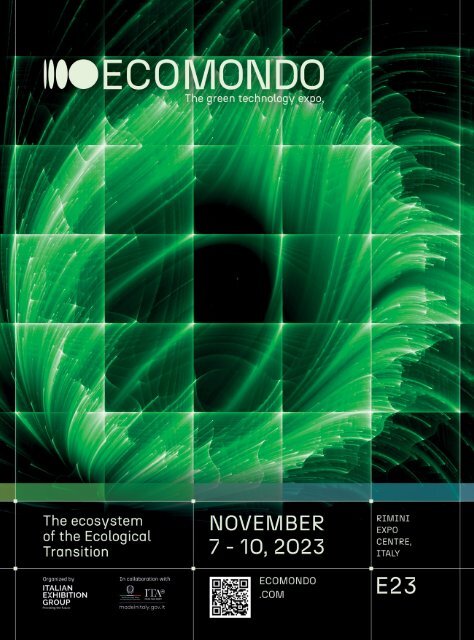Green Economy Journal Issue 60
Create successful ePaper yourself
Turn your PDF publications into a flip-book with our unique Google optimized e-Paper software.
STRAPHEAD<br />
ENERGY<br />
WIND grabs more provinces as<br />
DEMAND GROWS<br />
The South African wind sector is following a natural evolution, demonstrating the same<br />
trajectory and adjustments as its global market counterparts, with a shift from resource-rich<br />
areas to regions attractive for their ideal transmission connections.<br />
BY NORDEX ENERGY SOUTH AFRICA<br />
The natural evolution is further underpinned by a downward<br />
pricing curve for the cost of energy, more powerful and bigger<br />
turbine generators as well as increased market competitiveness.<br />
In South Africa, this geographic shift outside of the Cape provinces is<br />
driven by the region’s constrained grid capacity, clearly demonstrated<br />
by the government’s last procurement round, REIPPPP’s Bid Window<br />
6, which failed to secure a single wind project.<br />
However, areas such as the Mpumalanga province have available<br />
grid capacity and with more coal generation facilities reaching the<br />
end of their lifetime resulting in their decommissioning, additional<br />
grid capacity in this thermal-power region will open.<br />
The market intelligence clearly indicates that by 2027 new wind<br />
power generation projects will become concentrated in grid-rich<br />
areas, with KwaZulu-Natal and Mpumalanga emerging as important<br />
wind jurisdictions, within the next five years. The South African<br />
Renewable Energy Grid Survey, released in June 2023, shows stable<br />
and constant growth in wind projects being developed in these new<br />
zones, which is vital for the industry – especially if the country is to<br />
be successful in its plan to industrialise the renewable energy sector.<br />
“Original equipment manufacturers (OEMs) such as ourselves, as<br />
well as both local and global investors, prefer a consistent pipeline<br />
of projects for long-term investment decision-making. While we are<br />
able to meet the technology needs of lower wind-resourced areas,<br />
it is challenging to operate within a market that isn’t reinforced by<br />
clear supportive policy and consistent closure of projects without<br />
delays,” says Compton Saunders, managing director of Nordex<br />
Energy South Africa.<br />
In preparation to meet market needs, Nordex Energy South Africa<br />
introduced technology offering an increase in unitary power, which<br />
means improved cost of energy, as well as a reduction in land usage<br />
and visual impact.<br />
In addition to more powerful generating platforms, taller towers<br />
are necessary to capture better wind conditions at higher altitudes,<br />
in areas such as Mpumalanga. To date, most wind turbine towers<br />
in South Africa have been 80 to 120 metres tall, but as we shift into<br />
new regions, this will need to increase.<br />
Looking at the global market, OEMs such as Nordex are working on<br />
projects with hybrid towers of 168m hub height with this technology<br />
available to the local South African market. There are also various<br />
tower technologies between 120m to 200m that are either available<br />
or under development.<br />
These 168m hybrid towers that could be offered in this market<br />
comprise around 100m concrete sections that would be locally<br />
manufactured, and the balance of (68m) steel sections that can be<br />
manufactured locally or imported.<br />
“Our industry is going to require large volumes of wind turbine<br />
components in a relatively short space of time and the potential<br />
overlapping construction programmes could result in greater<br />
logistical considerations. The majority of the components will arrive<br />
on a vessel before being offloaded and then stored close to the<br />
port before road transportation to the final installation destination<br />
commences. We already know that the availability of land in ports<br />
or close to ports could be a challenge and that the ability to handle<br />
large volumes through single entry and exit gates will be hindered<br />
by congestion,” says Saunders.<br />
He continues, “Another consideration is that the longer blade<br />
lengths that we’ll need to bring into the country require specialised<br />
trailer sets, which will need to be sourced abroad and will then<br />
require licensing locally. And, with the uncertainty and continuous<br />
delays in our country’s renewables market, the timing of investment<br />
decisions is very tricky.”<br />
Members of the Nordex Energy South Africa Services team on top of one of<br />
the wind turbines at Dorper Wind Farm in Molteno, Eastern Cape.<br />
South Africa can also begin to see the pairing of wind and solar<br />
power plants, meaning that a single transmission connection point<br />
may be used to provide Eskom with the increased uptake of power<br />
at a particular point.<br />
It has been proven in global energy markets that the co-location<br />
of wind, solar PV and energy storage technologies offers more<br />
stable, predictable and dispatchable power output, and the option<br />
of shared grid connections makes sense in the efforts to optimise<br />
the current grid infrastructure.<br />
“Hybridisation of facilities brings extra value in terms of grid<br />
utilisation. It is especially remarkable when the generation of both<br />
wind and solar PV technologies are complementary, and the combined<br />
curve matches the power demand. Our global counterparts have<br />
experience for us to draw on, and we will do so in new South African<br />
regions if this brings value to our customers,” Saunders concludes.<br />
Case studies in the country show that the generation peak hours<br />
of wind facilities are early in the morning and late evening time,<br />
which combined with the generation curve of solar facilities, bring<br />
an overall curve matching quite well with the demand.<br />
8<br />
9

















